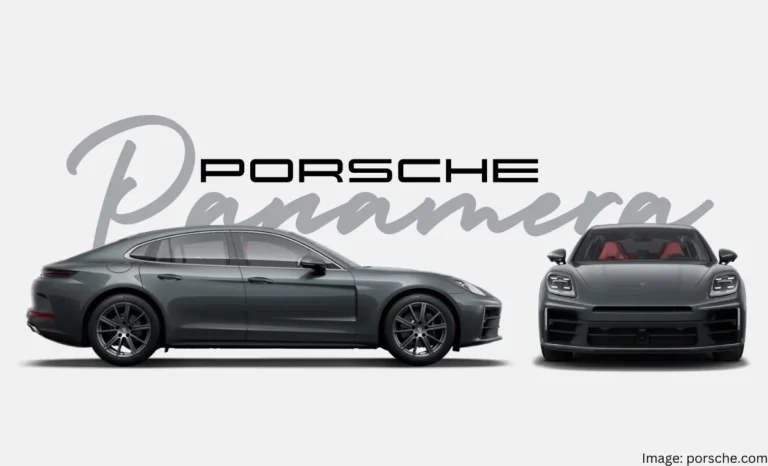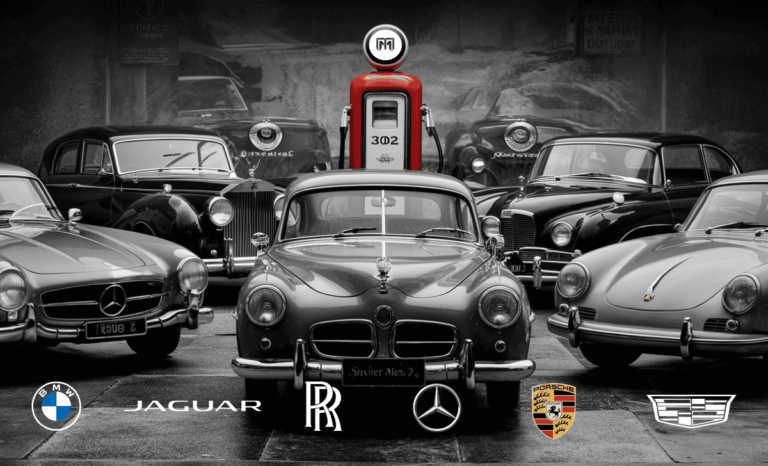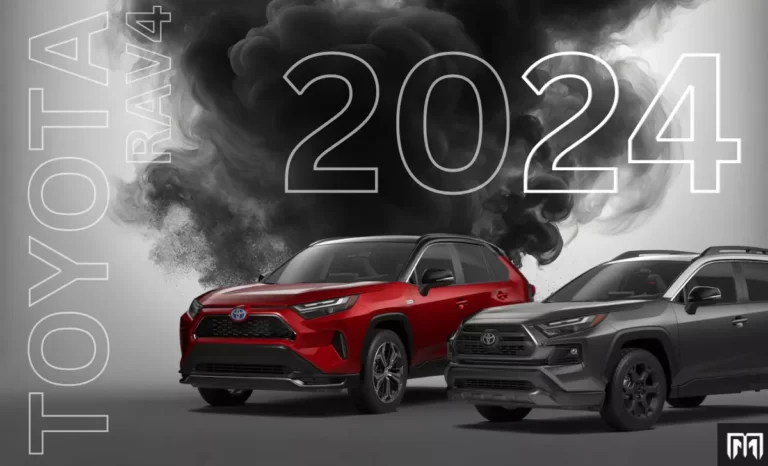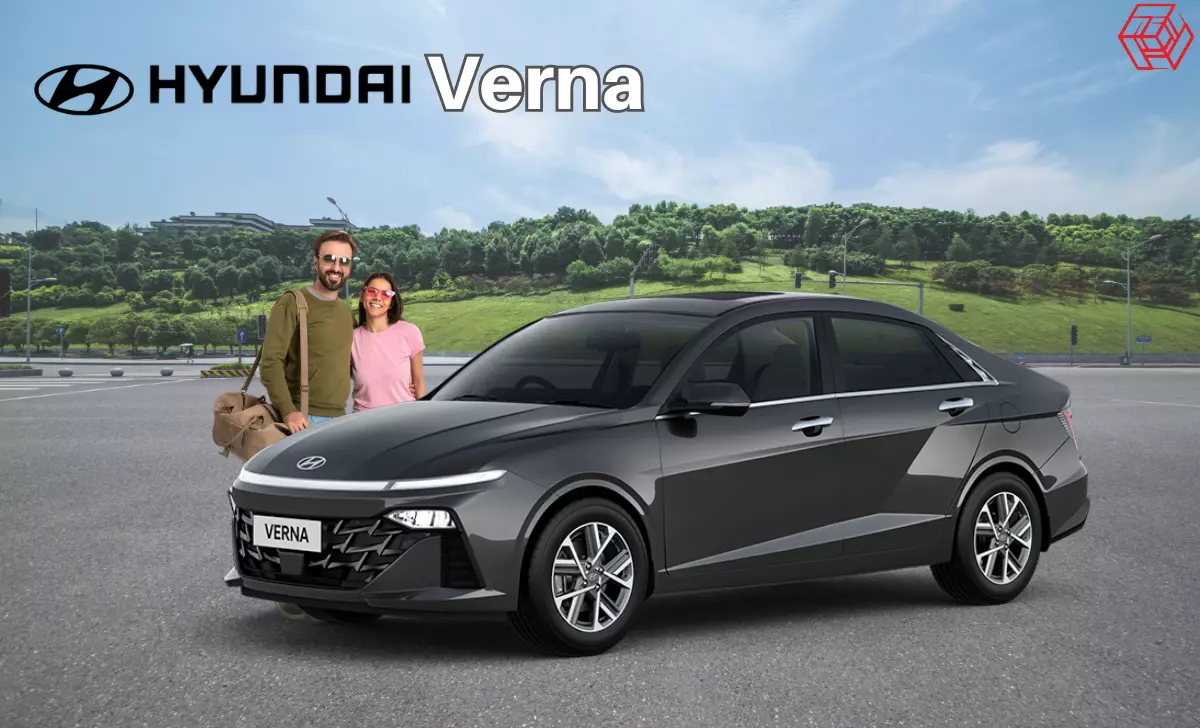
2023 Hyundai Verna And Provide An Honest Review
The compact sedan produced by the South Korean automaker Hyundai has long been a preferred option for customers worldwide. The 2023 Hyundai Verna will be studied in-depth in this review to determine whether it comes up to the standards set by its greats. Hyundai Verna’s current version has been totally redesigned. Not only does it not resemble the earlier sedan, but it is also completely new and improved on the interior. The 2023 Hyundai Venrna includes segment-leading amenities such as heated and ventilated seats, as well as cutting-edge technology such as ADAS, huge screens, and a motorized driver seat. Let’s look at the Hyundai Verna 2023 in detail.
In this article
Hyundai Verna High-lights
The all-new Hyundai VERNA now has 1st in Segment – Horizon LED positioning Lights & DRLs that extend across the width of the sedan, making a striking and ultramodern statement. This vehicle was created to symbolize the future of smart transportation solutions. The distinctive rear look of the brand-new Hyundai VERNA is further enhanced by the Parametric Connected LED tail lights, which exude a high-tech and luxurious impression.
The all-new Hyundai VERNA will guarantee that every drive is as fulfilling as the last thanks to this segment’s best-in-class acoustic experience—Bose Premium Sound 8 Speaker system. The all-new Hyundai VERNA’s flawlessly integrated 26.03 cm (10.25″) HD Audio video navigation system and Digital cluster with color TFT MID guarantee an immersive in-cabin experience while also complementing the sedan’s hi-tech and modern attractiveness.
The brand-new Hyundai VERNA now has the “industry’s first switchable type infotainment system” and temperature control. Controlling functions for the air conditioner and entertainment systems using the interface is a fluid and contemporary experience.
Exterior of Hyundai Verna
As previously said, the Verna 2023 looks nothing as it did before. It’s bigger in every dimension, which makes it appear more proportional. The front is outfitted with a linked LED DRL bar that looks rather modern. The LED headlamps are nestled beneath this bar, and the wide grille is also rather athletic.
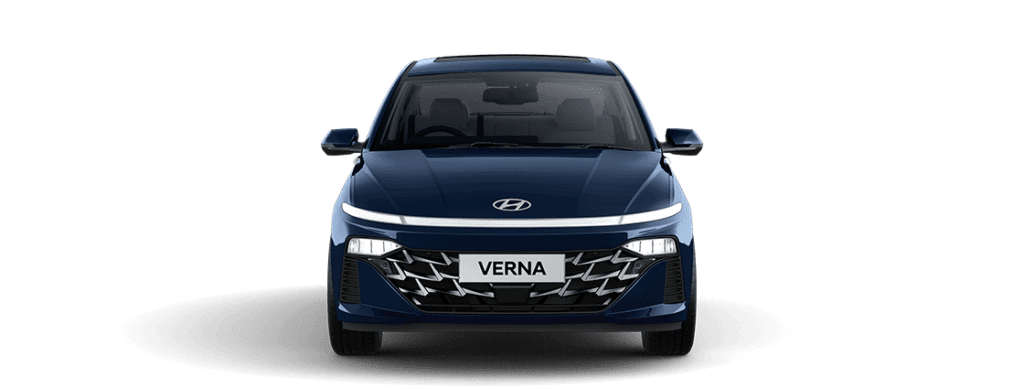
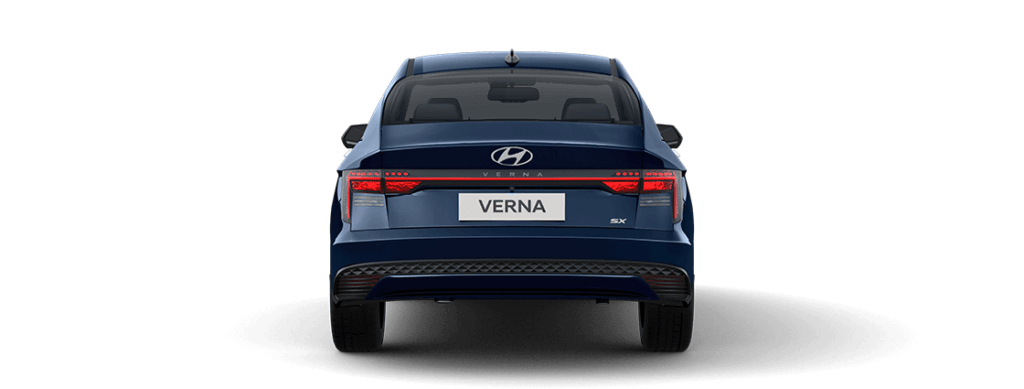
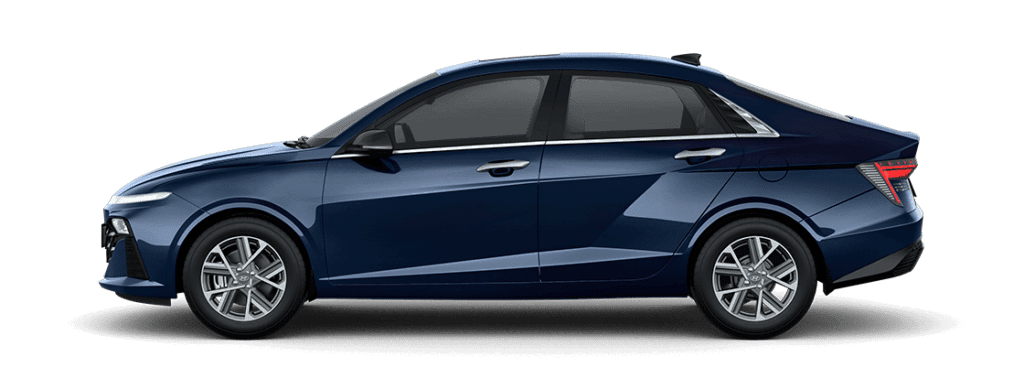
When viewed from the sides, the Verna has a coupe-like silhouette that is highly sporty. The beautiful 16-inch alloy wheels add to the athletic appearance. The integrated light bar and the sharp tail lamps are the features at the back. Overall, the new Verna is futuristic and is undoubtedly pushing the design limit in the class.
The Verna features a coupe-like design that is very athletic when viewed from the sides. The stunning 16-inch alloy wheels enhance the sporty look. The characteristics at the back are the integrated light bar and the sharp tail lamps. Overall, the new Verna is futuristic and definitely pushes the class’s design envelope.
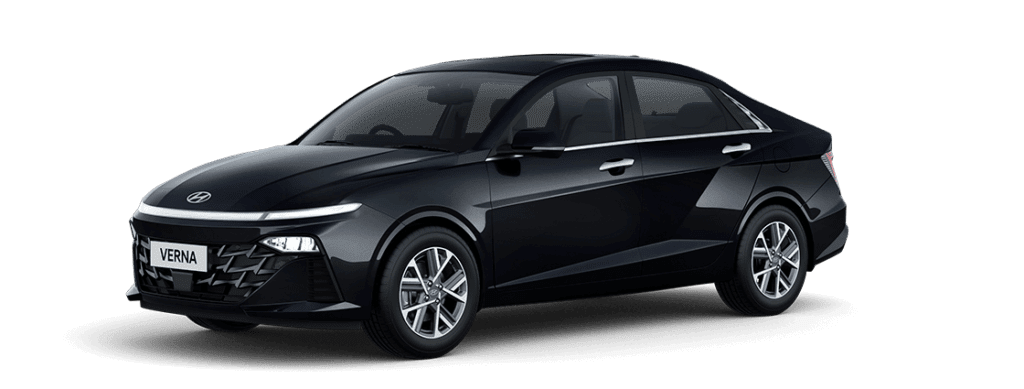
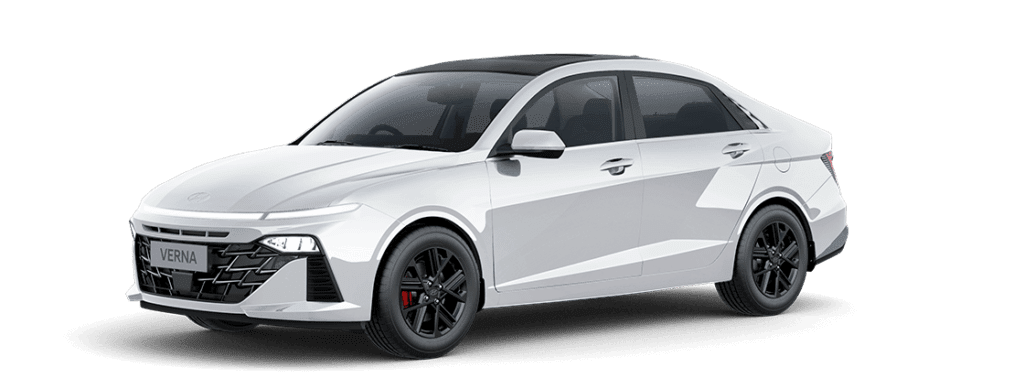
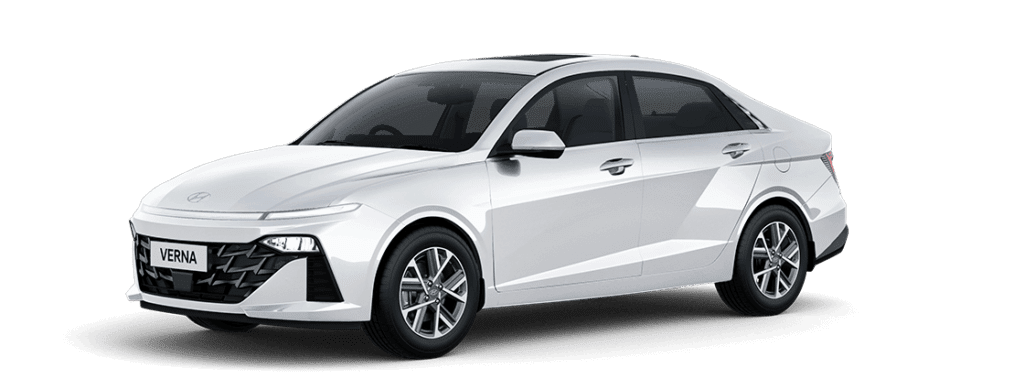
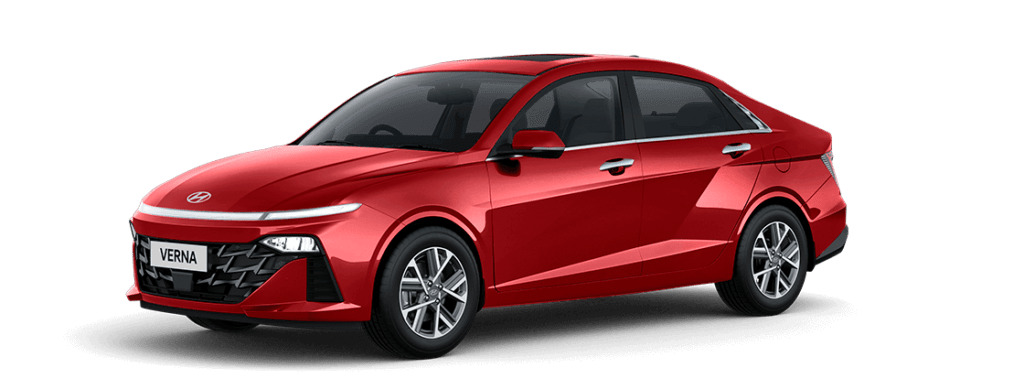
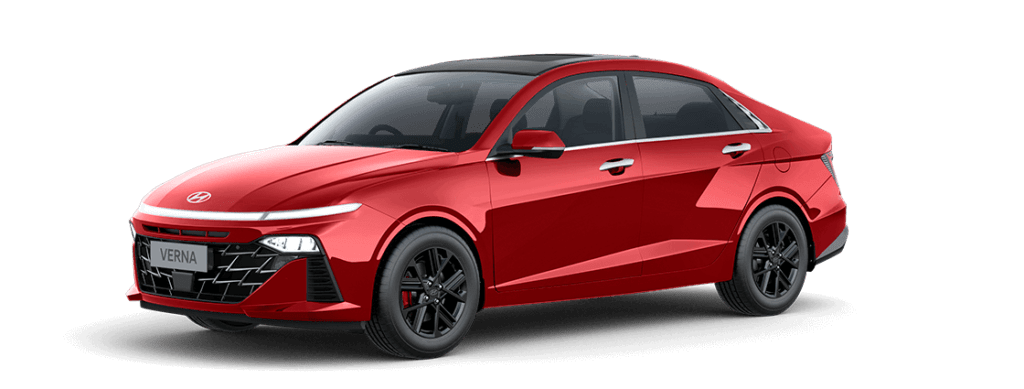
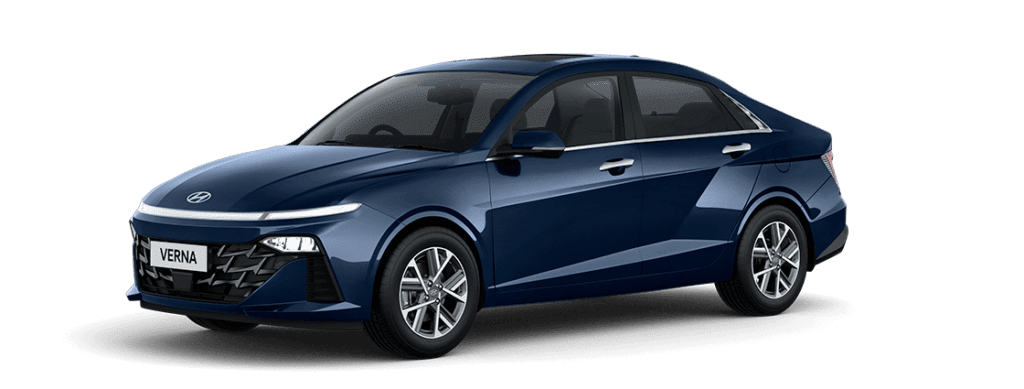

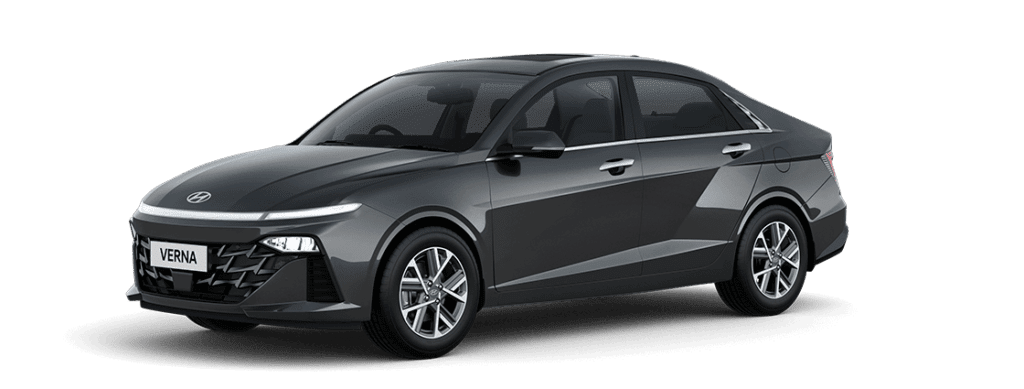
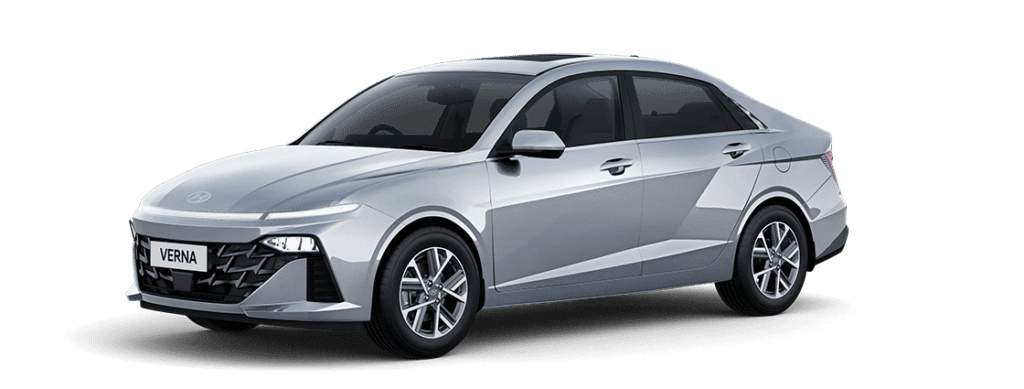
Nine different color options, including seven monochromatic and two dual-tone shades, are offered for the Verna. These include Starry Night, Titan Grey, Tellurian Brown, Typhoon Silver, Fiery Red, Atlas White, and Abyss Black. The dual-tone paint options are only available on turbo cars, although the white and red colors can be selected with a black roof.
Interior of Hyundai Verna
In the new Hyundai Verna, the motorist is greeted by a clean, new, and sober interior. The design is straightforward, with a floating 10.25-inch touchscreen in the middle and a horizontal layer arrangement for the remainder of the dashboard. The petrol variants have a light beige color scheme, whereas the Turbo variants have a sportier black and red color scheme. Leatherette upholstery is used extensively throughout the interior.
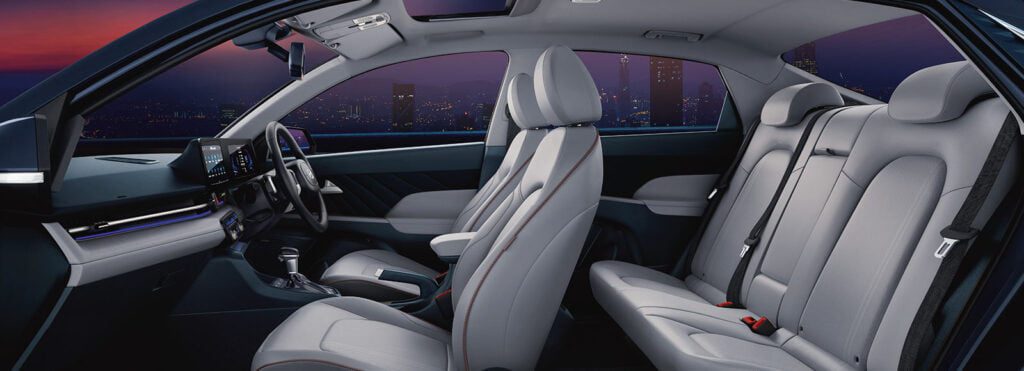
The saloon includes numerous segment-first innovations, including a Bose sound system and heated and ventilated front seats. Full LED lighting, an electric sunroof, Android Auto and Apple CarPlay, an eight-speaker Bose sound system, a wireless charger, cruise control, paddle shifters, 64-color ambient lighting, automated climate control, and a motorized front driver seat are among the additional goodies. Rear seat passengers are likewise pampered with rear AC vents and window drapes.
Performance of the Hyundai Verna
Instead, you get one of two petrol engines: the 1.5-liter MPi, a four-cylinder, normally aspirated engine linked to a 6-speed manual or an eight-step CVT, or the 1.5-liter T-GDi, a four-cylinder, direct-injection turbo-engine mated to a 6-speed manual or a 7-speed dual-clutch auto. Apart from the base MPi manual, we had an opportunity to drive them all.
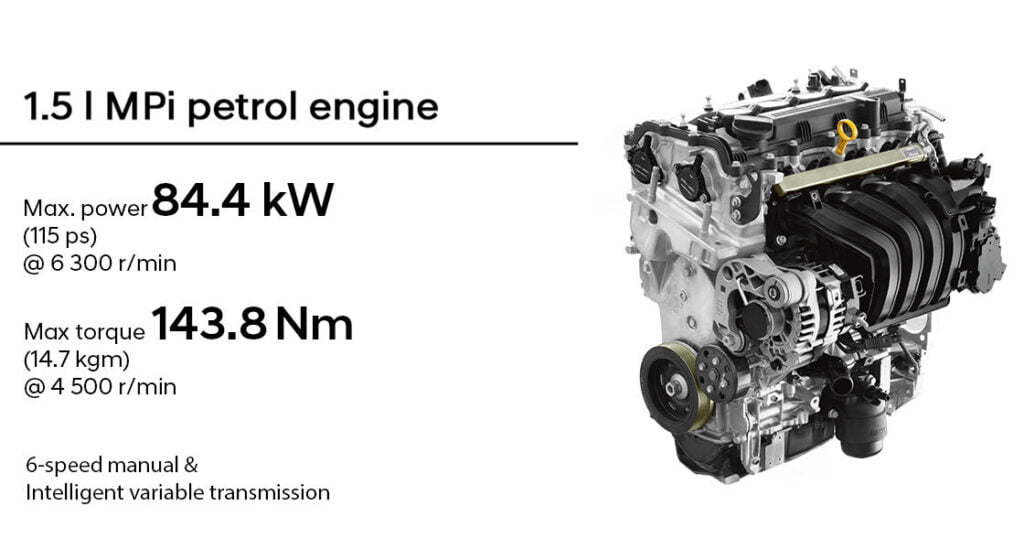
Except for the Kia Selto and Carens, the 115hp naturally aspirated petrol engine is already well-known, having been used in the preceding Verna and the Creta. It seems suitable for driving on the motorway and in the city because of its elegant nature and evenly distributed power and performance. The CVT in this instance feels more tuned than the one in the Creta, to put it mildly.
Although the Eco driving mode exhibits the expected sluggishness, in Normal, reactions and performance closely match engine revs. Even more so than Sport mode, which does offer some pep at low speeds but also has a severe rubberband effect as you go faster, it almost seems satisfying to drive in this mode. Even though you might be tempted to use the paddles to quickly shift between the simulated “gears,” this isn’t the engine for exuberant driving.
That would be the brand-new turbo-petrol engine, which has some welcome surprises. In addition, according to the ARAI cycle, it is more fuel efficient than the 1.5 MPi, with statistics of 20 kpl and 20.6 kpl for the manual and DCT, respectively. It features class-leading power and torque ratings of 160 hp and 253 Nm.
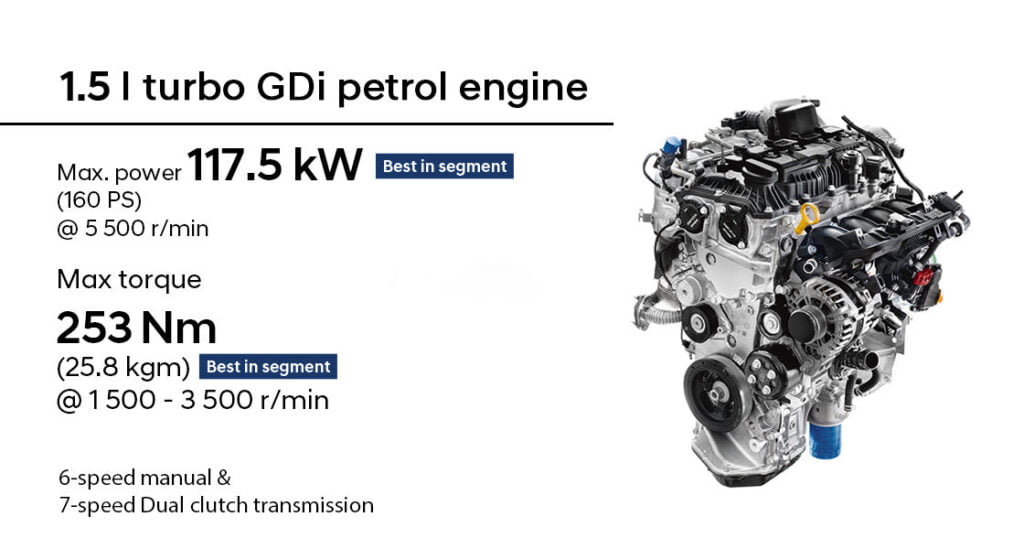
Furthermore, it has a full manual transmission rather than Hyundai’s two-pedal iVT, which sources claim is an acknowledgment that aficionados prefer three pedals. Because of its availability in two trim levels and two gears, it is also more convenient than the previous 120hp 1.0 T-GDi and, as a result, accounts for 40% of Verna reservations at the time of this review.
This is a fantastic all-around engine. For one thing, it’s smooth and refined, with none of the previous 1.0’s three-cylinder thrum. It lacks the gut-punch acceleration from some rivals, much like the Creta’s previous 1.4-liter turbo, which it practically replaces, however, the power is all there. It’s presented in a logical order, and you’ll quickly realize you’re up to speed. It’s also enjoyable to control all of this power with a 6-speed manual transmission with clean throws and quick shifts. The only drawbacks are a long clutch pedal travel and a high engagement point.
Amazingly, the manual version has driving modes, which are claimed to change throttle response, but in reality, the difference is negligible. Then obviously, you can tell the difference inside the DCT variant, which appears to be the best of the bunch. It unites the power of this engine with the simplicity of an automatic transmission and certain other features, as previously mentioned. The DCT transmission is also remarkably smooth, with no clunky transitions between speeds, making it ideal for both city driving and sporty driving. And, sure, you should use the paddle here.
Safety of Hyundai Verna
The Verna, like the new Tucson, has up to 17 Level 2 ADAS functions, which is a remarkable number for this car. They’re especially useful on highways with clearly delineated lanes. I personally witnessed several of them, and they all contributed to making my travel far safer than it otherwise would have been. These features include rear cross-traffic collision avoidance, lane-keeping assistance, forward collision warning, and smart cruise control. Not only that, but the vehicle has 65 safety features such as 6 airbags, ESC, a tire pressure monitoring system, and front parking sensors.
Verdict
The newest edition of the Verna is not only aesthetically pleasing but also incredibly functional. whether in terms of functionality, size, or performance. It continues to be more inexpensive than the German twins, with pricing starting at Rs. 10.90 lakhs and rising to Rs. 17.38 lakhs. Keep checking back for a thorough evaluation because we’ll be driving it shortly.
Hyundai Verna Overview
| Category | Sedan |
|---|---|
| Product Label | 1.5 l Turbo GDi Petrol | 1.5 l MPi Petrol |
| Model Name | VERNA |
| Seats | 5 |


